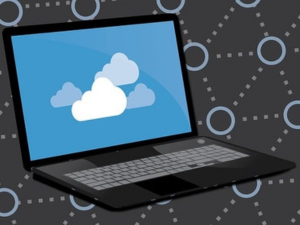 In today's digital age, businesses operate in a vastly different environment compared to a few decades ago. Instead of brainstorming cold calls and advertising gimmicks in in-person meetings, business owners and employees now exchange messages online, leverage artificial intelligence, and familiarize themselves with terms like "malvertising."
In today's digital age, businesses operate in a vastly different environment compared to a few decades ago. Instead of brainstorming cold calls and advertising gimmicks in in-person meetings, business owners and employees now exchange messages online, leverage artificial intelligence, and familiarize themselves with terms like "malvertising."
Cyberattacks are a growing concern, with threats extending beyond traditional phishing and password breaches. One such threat, malvertising, has gained significant traction since its emergence in the late 2000s.
Understanding Malvertising
Malvertising, short for malicious advertising, involves attackers placing malware onto desktops and mobile devices through deceptive ads. This can result in severe consequences for your brand's reputation, especially if attackers leak sensitive employee and customer data.
Malvertising typically occurs through two major platforms: fake websites and legitimate ones.
Malvertisements on Malicious Websites
Attackers create fake website pages that closely resemble official ones, aiming to trick users into visiting these illegitimate sites.
According to Rapid7's cybersecurity researchers, this tactic frequently targets Windows administrators by impersonating popular Windows utilities like Putty and WinSCP. These attackers rely on searchers misspelling website names to redirect them to fraudulent sites.
For example, typing "puuty.org" instead of "putty.org" or "vvinscp.net" instead of "winscp.net" can lead users to a fake site. In their haste, administrators may click on these sites, allowing malware to infiltrate their business systems.
Malvertisements on Legitimate Websites
In addition to fake websites, malvertising can occur through malicious ads placed on legitimate websites.
Hackers embed malware into genuine company pages, making even cautious users vulnerable. They breach third-party servers by inserting harmful code into:
- Display ads
- Banners
- Videos
- Other clickable ad content
Once clicked, these ads install malicious software on the device or redirect users to a fake website, where advanced attacks can destroy files, copy sensitive data, and monitor activity.
Identifying Malvertisements
Protecting yourself and your employees from harmful sites and ads is possible by recognizing the signs of malvertising:
- Misspelled URLs or ad content
- Unprofessional or sloppy page layouts
- Tempting ads with unrealistic promises
- Deals that seem too good to be true
Implementing Effective Protection Measures
As a publisher, you can safeguard your website visitors by carefully selecting third-party ad networks and scanning for malware before uploading ads. Trusted cybersecurity teams can provide recommendations based on recent ad activity.
Remember, your business's cybersecurity is only as strong as its weakest link—often, a single employee clicking on a malicious ad. Regularly update extensions, software, and web browsers with antivirus protection, and encourage safe browsing practices. Reducing the risk of malvertising by contacting a cybersecurity company like Integrated Technology Systems to review your business will provide your company with greater peace of mind moving forward.
Essential Tips for Businesses To Prevent Data Loss
 Data is the lifeblood of any business. From financial information to customer records and internal documents and marketing materials, critical business information is stored electronically. Therefore, data loss can be a devastating setback for any company.
Data is the lifeblood of any business. From financial information to customer records and internal documents and marketing materials, critical business information is stored electronically. Therefore, data loss can be a devastating setback for any company.
The loss of data can lead to lost productivity, operational disruptions, and even trouble legally. However, you are in luck, there are effective ways businesses can prevent data loss and ensure continuity of operations.
The Importance of Regular Backups
Establishing a regular backup routine is one of the most crucial steps in data loss prevention. Backups create copies of your data that can be used to restore it in the event of a system failure or hardware malfunction.
There are different types of backups, each serving a specific purpose. Full backups create a complete copy of your data at a specific point in time. Incremental backups capture only the changes made since the last full backup, saving storage space.
Businesses should establish a backup schedule that balances the need for frequent backups with storage capacity limitations. The 3-2-1 backup rule is a popular strategy. This guideline recommends having at least three copies of your data on two different media, with one copy stored offsite.
Cloud Storage for Enhanced Data Recovery
Traditionally, businesses relied on physical backups stored onsite. However, cloud storage services like Google Drive or Dropbox offer a more convenient alternative. Your data resides on remote servers managed by the service provider, allowing you to access and restore it from anywhere with an internet connection. This is particularly beneficial for businesses with remote employees.
Additional Data Loss Prevention Strategies
Backups are an important first line of defense. However, a comprehensive data loss prevention plan should include additional measures. User access controls can limit access to sensitive data based on an employee’s role within the organization.
Data encryption scrambles your data, making it unreadable to anyone without the decryption key. Employee training on data security best practices can also help prevent accidental data loss or breaches.
Safeguarding Your Business Doesn’t Need to Be Expensive
Protecting your data doesn’t have to be a budget burden. There are many low-cost ways to protect your business from data loss. The solutions mentioned above not only lower the chance of losing data but also make it easier to get it back.
Businesses that prioritize data security gain a strategic edge. Contact Integrated Technology Systems today, and let’s discuss cost-effective data protection solutions that fit your business.
Integrated Technology Systems
6 East 45th Street, Suite 400
New York, NY 10017
212-750-5420
https://www.itsnyc.com



